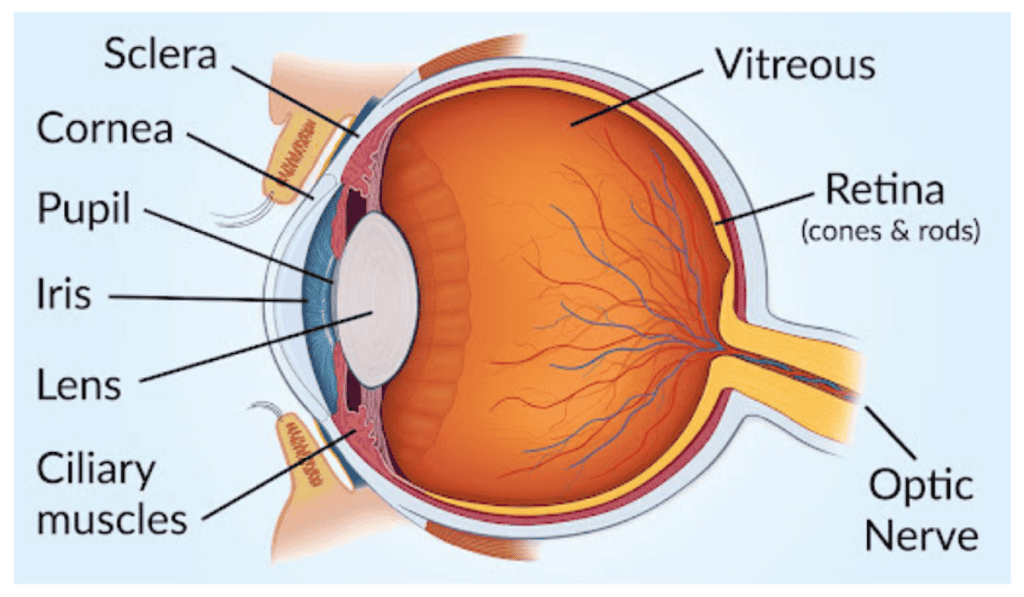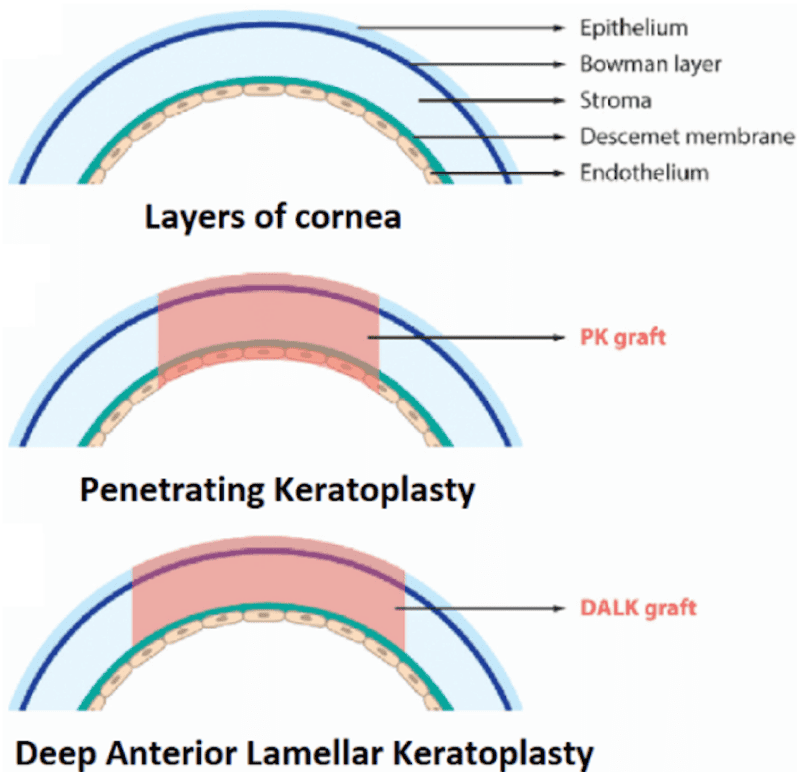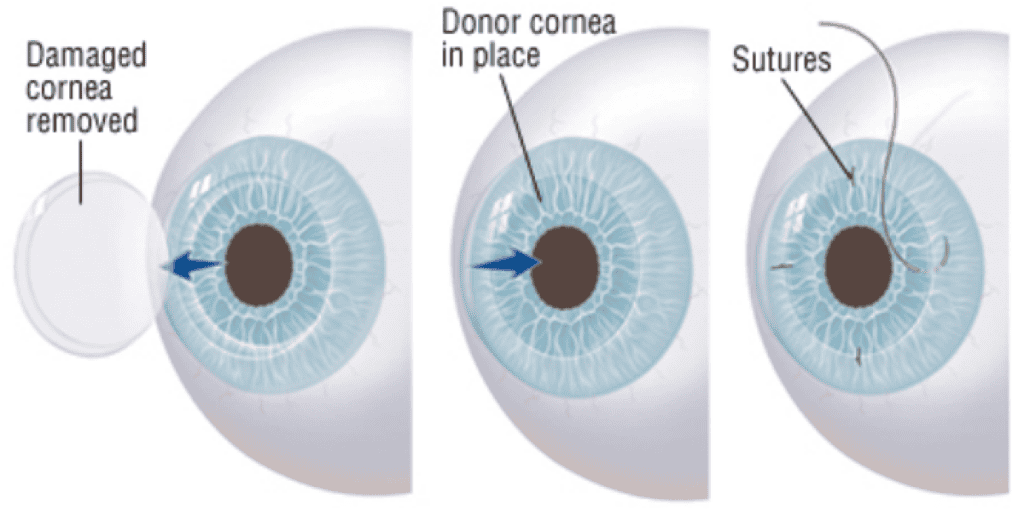Understanding Corneal Transplant Surgery:
Corneal transplant surgery is a procedure performed to replace a damaged or diseased cornea with a healthy donor cornea. There are different types of corneal transplant surgeries, including penetrating keratoplasty (PK) and deep anterior lamellar keratoplasty (DALK). This pamphlet aims to provide you with essential information about these procedures, including their risks and benefits.

Penetrating Keratoplasty (PK):
In PK, the entire thickness of the cornea is replaced with a donor cornea. This procedure is typically recommended for conditions that affect all layers of the cornea, such as corneal scarring, some cases of keratoconus, or corneal dystrophies.
Deep Anterior Lamellar Keratoplasty (DALK):
DALK involves the replacement of the outer layers of the cornea while leaving the innermost layer, known as the endothelium, intact. It is primarily used to treat conditions that affect the outer layers of the cornea, such as keratoconus or outer layer corneal scars.


Benefits of Surgery:
Corneal transplant surgery can provide significant benefits for individuals with corneal conditions. Some of the potential benefits include:
Improved Vision: The goal of corneal transplant surgery is to improve your vision and correct any visual impairments caused by corneal diseases or injuries.
Restored Corneal Function: Corneal transplantation can restore the normal structure and function of the cornea, allowing it to properly focus light onto the retina and improve visual clarity.
Enhanced Quality of Life: Improved vision and relief from corneal symptoms can significantly enhance your quality of life, allowing you to engage in daily activities with greater ease and confidence.
Risks of Surgery:
As with any surgical procedure, there are risks involved with the a corneal transplant which can cause vision reduction or loss. Fortunately severe complications are uncommon and many complications can be treated. Some potential risks include infection, transplant rejection, graft failure and need for a repeat transplant, astigmatism (a glasses error), elevated eye pressure or damage to the graft from trauma.
Summary:
Corneal transplant surgery can be a life-changing procedure for individuals with corneal conditions. At your appointment we will have a thorough discussion to help you understand the surgery based on your unique circumstances. This will provide you with a personalized recommendation and guidance to help you make an informed decision regarding your eye health.
I look forward to helping improve your vision through a corneal transplant.
